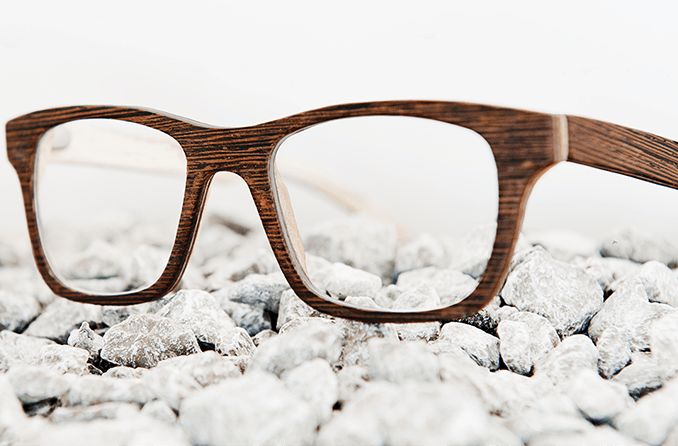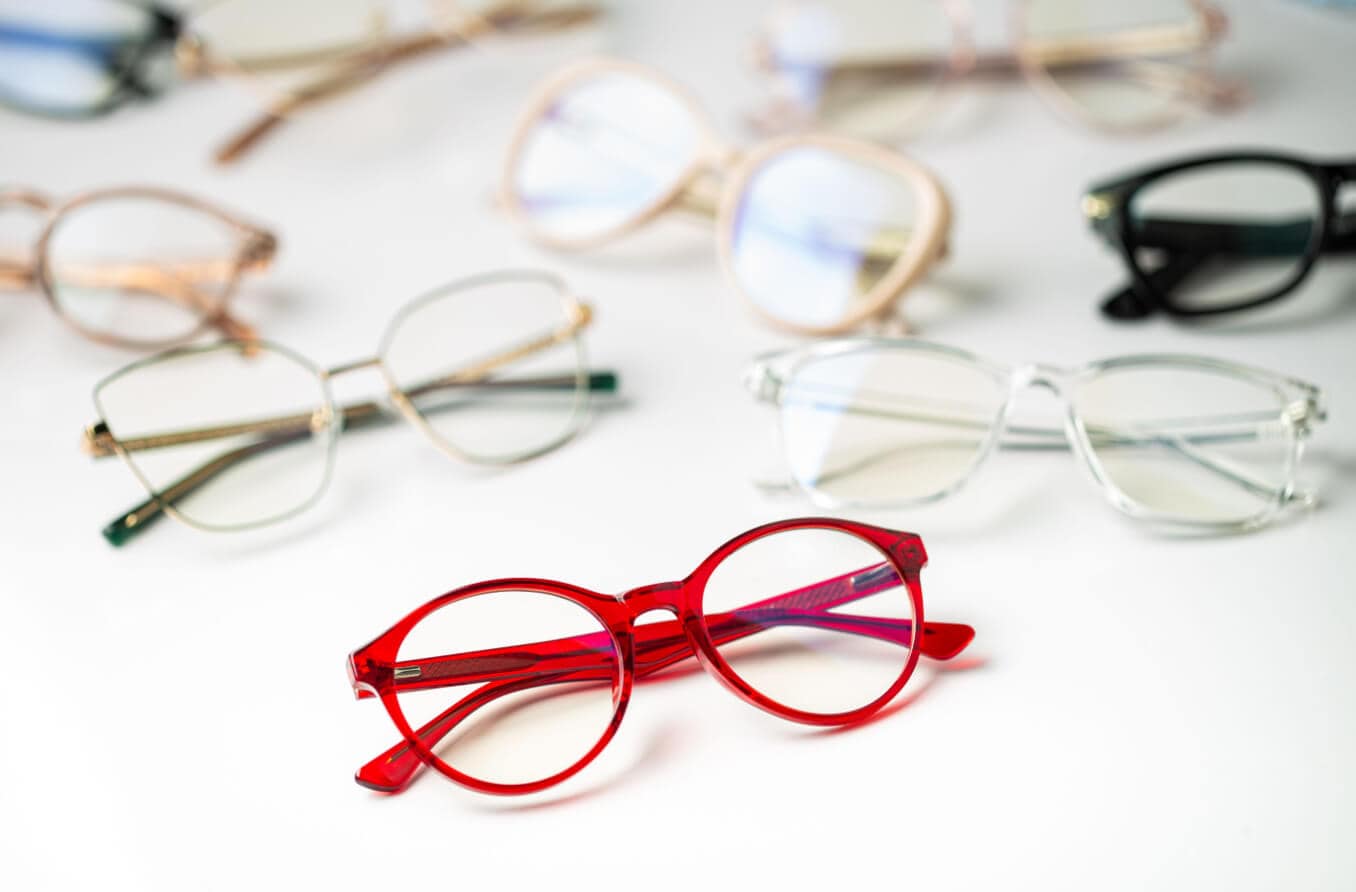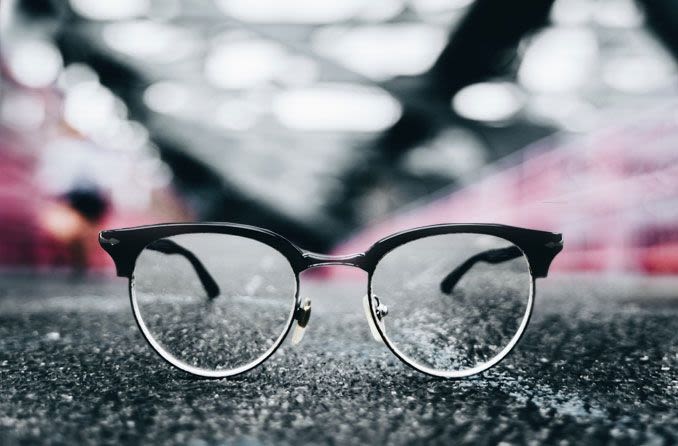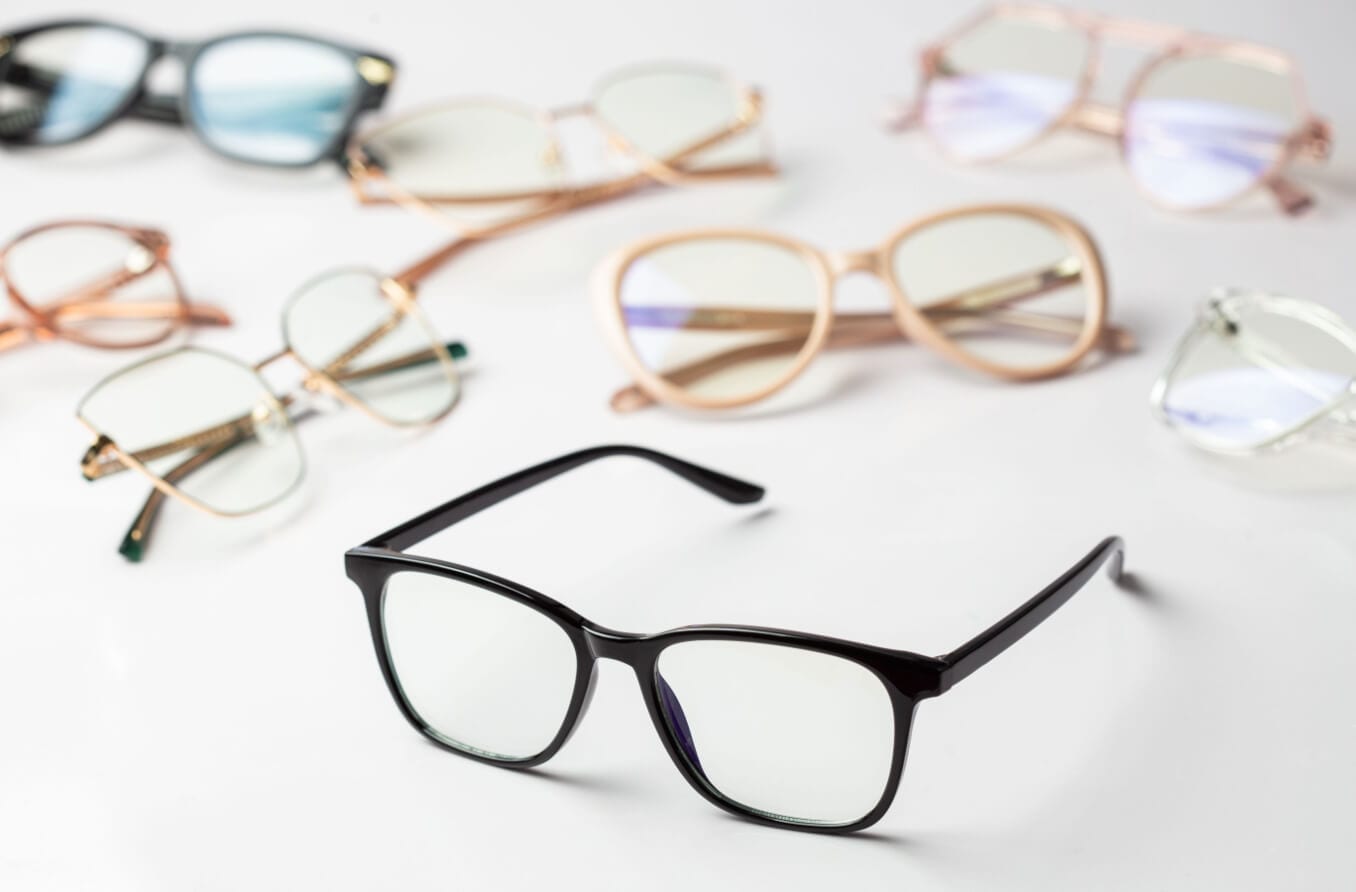Plastic
If you want the colors of the rainbow, then zyl (zylonite, or cellulose acetate) is your material. Zyl is a very cost-effective and creative option for eyewear and is extremely lightweight. Particularly popular right now are laminated zyl frames that have layered colors. Look for light colors on the interior sides, which can make your eyewear "disappear" from your visual field when you wear them. An all-black frame, on the other hand, is visible at all times on both interior and exterior sides.
Some manufacturers also use cellulose acetate propionate, a nylon-based plastic that is hypoallergenic. It's lightweight and has more transparency and gloss than other plastics. If your main criterion for a frame is lightness, then definitely consider propionate frames.
Eyeglasses made of nylon were introduced in the late 1940s. Because of brittleness and other problems, eyeglass manufacturers switched to blended nylon (polyamides, co-polyamides and gliamides). Today's blended nylon frames are both strong and lightweight.
Nylon is also a premier material for sports and performance frames, typically made of gliamides, grilamid or trogamid materials that are very resistant to hot and cold and are more flexible, yet also stiff. Nylon also is easily molded into today's popular wraparound styles, as well as other shapes that are difficult to produce.
It may sound odd, but plastic made of castor oil (actually, castor seed oil) is now used in some eyewear. Traditionally used as a laxative, a soap ingredient and a machinery lubricant, castor oil is also making its way into plastic auto parts, along with other non-petroleum-based plastics. Reasons for castor oil plastic development include the high price of petroleum and the ease of growing castor bean plants in places where other profitable plants don't thrive.
Plastic frames do have some drawbacks. They are easier to break than metal frames, they will burn (but are not easily ignited), and aging and exposure to sunlight decrease their strength slightly. Color can fade over time, but not as much with modern materials.
SEE RELATED: Sunglasses Diagram
Metal
Monel — a mixture of any of a broad range of metals — is the most widely used material in the manufacture of eyeglass frames. Its malleability and corrosion resistance are pluses.
Though most monel frames are hypoallergenic, it's possible people with sensitive skin may experience irritation if monel rests directly against their face. But this is preventable if the right kind of plating, such as palladium or other nickel-free options, is used.
Titanium and beta-titanium are also popular materials for eyeglass frames. Titanium is a silver-gray metal that's lightweight, durable, strong and corrosion-resistant. It has been used for everything from spacecraft to implantable medical devices such as heart valves.
Titanium eyewear can be produced in a variety of colors for a clean, modern look with a hint of color. And it's hypoallergenic.
Some titanium frames are made from an alloy that is a combination of titanium and other metals, such as nickel or copper. In general, titanium alloy frames cost less than 100 percent titanium frames.
Beryllium, a steel-gray metal, is a lower-cost alternative to titanium eyewear. It resists corrosion and tarnish, making it an excellent choice for wearers who have high skin acidity or spend a good amount of time in or around salt water.
Beryllium is also lightweight, very strong, very flexible (making it easy for an optician to adjust your glasses) and available in a wide range of colors.
Comparison of Eyeglass Frame Materials









